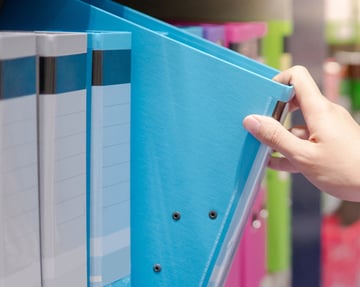 Our guest blogger Steve Franke is a FoodLogiQ Enterprise Account Manager. He’s an avid sports fan, music aficionado, and has spent over 30 years in the restaurant industry.
Our guest blogger Steve Franke is a FoodLogiQ Enterprise Account Manager. He’s an avid sports fan, music aficionado, and has spent over 30 years in the restaurant industry.
Some restaurants were well-positioned for the shifts in consumer spending that happened in 2020 following the impact of Covid-19. Major foodservice brands such as Chipotle, McDonald’s, Wingstop and Domino's saw record sales as a result of dining habits that were forcibly adjusted to accommodate restrictions and regulations. Drive-thru, curbside pick-up, carry out and delivery became the new normal. This brought new customers and increased sales from streams of revenue that had previously not been sufficiently tapped into, or had never even existed. Of course, every stakeholder within the food system faced tremendous challenges, but for the fortunate few, the past year was more of a boon to the bottom line than a bust.
However, most restaurants were not as fortunate. According to the National Restaurant Association (NRA), the restaurant industry ended 2020 with total sales that were $240 billion below the pre-pandemic forecast for the year. As of December 1, 2020, more than 110,000 eating and drinking places were closed for business temporarily, if not for good. The eating and drinking place sector finished 2020 nearly 2.5 million jobs below its pre-coronavirus level. At the peak of initial closures, the NRA estimates up to 8 million employees were laid off or furloughed.
The good news is that for the foodservice brands that survived, the market they now face post-pandemic promises rapid growth and expansion. Investors are watching, and the foodservice industry is ripe for funding and backing from private equity and venture capital firms as well as public offerings. It’s time to grow. Is your brand ready? Recent investor news includes Goldman Sachs acquiring Zaxby's, Capriotti’s purchasing Wingstop, and Inspire Brands and Dunkin’ Brands joining to form the second-largest restaurant company in the U.S. by both system sales and locations. Brinker International is investing in new virtual brands such as It’s Just Wings, and Krispy Kreme just announced their plan to raise funds publicly through an IPO.
The journey ahead is filled with optimism and rising sales, but the path is not without significant obstacles that must be immediately addressed to ensure investor confidence and continued survival. Many restaurants are already struggling to keep up with demand, especially with regard to labor and product shortages. As a result, never before has a restaurant brand faced such a magnified pressure to automate processes. This stretches from the customer-facing employee to FSQA departments managing and gaining visibility of the entire journey of product from farm to fork along the supply chain. Without leading technology in place, processes will at minimum be inefficient, and at worst fail under the weight of what it takes to remain competitive in the next 18-24 months.
Product shortages are such severe disruption that restaurants and retailers alike are starting to fine suppliers if they do not meet minimum stock levels. Do you know where your products are? How reliable are your suppliers? Are you compliant with your documentation, or are you so busy scrambling to just stock your shelves that food safety and quality have been put on the back burner? This isn't sustainable, and it’s a recipe for brand risk, poor operation-level profitability, reduced sales and low morale among employees.
Don’t disregard the impact of how lack of pride in working for a dysfunctional brand affects labor costs. Restaurants that were once reveling in high sales volumes can now be found with locked doors, a closed drive-thru, and a sign on the window saying they can’t open because they don’t have enough employees to fill a schedule. Workers have lots of choices as the employment market reopens, and they want to work for innovative employers. Also, restaurants have an imperative to do more with less people, and this is likely to be a byproduct of the new normal that never truly disappears. The industry has changed. Are you using technology like FoodLogiQ to protect, build and expand your restaurant brand?
It is critical to have in place leading technology that will provide consumers the confidence to buy your products and services, attract the best workers to be on your team, and provide owners and investors the validation that your company has the operational resilience to manage the accelerated growth and also be hedged with the technology to mitigate risk should another crisis occur. This is what FoodLogiQ does for many of the leading global restaurant brands today. Want to find out more? Request time with the FoodLogiQ team today.
Tag(s):
Other posts you might be interested in
View All Posts
Product Formulation
10 min read
| February 24, 2023
The Price of Safety: Understanding the True Cost of a Food Recall
Read More
Food Labeling
4 min read
| October 25, 2016
Nutrition Facts Label Industry Resources
Read More
Food Labeling
2 min read
| January 4, 2019

